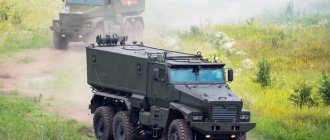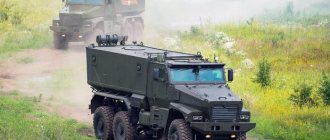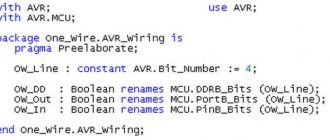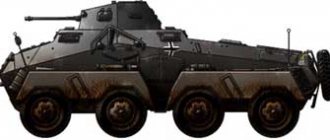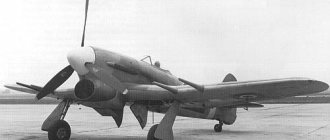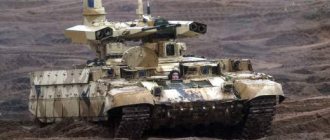Military vehicles are one of the most important components ensuring the conduct of modern combat operations of all types and branches of the military. Recently, a conference was held at the Congress and Exhibition Center on the main directions of development of a military vehicle of the new decade. Representatives of the Ministry of Defense, the Ministry of Industry and Trade, automobile industry enterprises and specialized universities took part in its work.
“The implementation of the concept and type of military vehicles for 2011-2020 has been successfully completed,” said Major General Alexander Shestakov, head of the Main Armored Directorate of the Ministry of Defense of the Russian Federation. “The tasks assigned to military motorists ten years ago have been fully completed. New protected vehicles have appeared, the family of vehicles for use in the Arctic has been expanded, and multi-purpose vehicles have been modernized. A list of automotive equipment for the next program decade has been compiled.”
From the sky - into battle
When ordering the most popular vehicle from industry, the Ministry of Defense prioritizes the preservation of the lives of military personnel. Therefore, today, of the new vehicles received under the State Defense Order for the Armed Forces, the majority are samples of armored vehicles. Protected mobile transporters are now capable of not only transporting personnel. After the installation of combat equipment, they also became means of fire destruction of the enemy.
In July 2022, serial deliveries of Typhoon-VDV armored vehicles began to the Russian Airborne Forces. The newest high-speed armored car will provide air assault formations with the full range of tasks they solve.
© kremlin.ru Special purpose vehicle, parachute-dropped "Typhoon-VDV".
"Typhoon-VDV" was created on the basis of the KamAZ-4386 4x4 platform. The modification for assault landings is primarily characterized by enhanced mine protection. The armor ensures the safety of soldiers from the explosion of 6 kg of TNT under the wheel or 4 kg under the bottom, which is V-shaped in the new armored car. This shape dissipates the energy of the explosion when hitting a camouflaged ammunition and saves the crew from fragments.
The vehicle with high ground clearance (420 mm) is designed for transporting personnel (capacity 7 military personnel) and military cargo. Vehicle weight - 13.5 tons, length - 6 m, width - 2.5 m, height - 2.96 m. With these dimensions, the Typhoon-VDV has excellent dynamic characteristics, allowing it to maneuver on all types of terrain. The suspension is based on hydropneumatic shock absorbers. Engine 350 hp allows you to reach speeds of up to 130 km/h. Cruising range with full fuel is 1,200 km.
In terms of firepower, the Typhoon-VDV is one of the most powerful army armored vehicles in the world. It is equipped with a remote-controlled combat module with a 30-mm automatic cannon and a 7.62-mm PKTM machine gun. It is expected that the vehicle will also become the carrier of the latest mortar system “Drok”, intended to support the airborne assault units of the Airborne Forces. This highly mobile airborne artillery weapon will fire conventional and new mines with an increased firing range and power from the fighting compartment of the vehicle, which also provides the ability to carry a mortar and fire from the ground.
As the weekly Zvezda was told in the information support group of the Airborne Forces of the Department of Information and Mass Communications of the Russian Ministry of Defense, the main advantage of the vehicle, along with the protection of personnel and equipment with a modern weapons system, will be the ability to parachute it behind enemy lines. The new parachute system for this aircraft will be presented for the first time by the Technodinamika holding of the Rostec state corporation at the MAKS-2021 air show, which will be held from July 20 to 25 in Zhukovsky near Moscow.
A landing system for large-sized military equipment is being created as part of the Parachute development work (R&D). The general director of the Technodinamika holding, Igor Nasenkov, recently announced that the parachute system consists of several domes with an area of 770 square meters each. In the version with maximum load capacity there are seven such domes. They will allow the landing of Typhoon-VDV vehicles with personnel inside.
© Vladimir Korobitsyn/zvezdaweekly.ru
Russian Defense Minister, Army General Sergei Shoigu.
Direct speech
“Military vehicles have become one of the most important components of the weapons and logistics system of the Armed Forces. The contribution of motorist soldiers to the Victory in the Great Patriotic War of 1941-1945, their services in the post-war period testify to unparalleled courage, perseverance and devotion to duty. Today, as before, the personnel of the automobile troops are improving their combat training and successfully solving problems to strengthen the defense capability of the state. The achievements of design teams and industrial enterprises that are effectively working on the creation of new models of automotive equipment in the interests of the branches and branches of the Armed Forces of the Russian Federation deserve high praise.”
Russian Defense Minister, Army General Sergei Shoigu. Moscow, May 27, 2022.
Preemptive move
Under these conditions, the domestic industry took a smart step - it began the proactive development of the Typhoon-K (KAMAZ) and Typhoon-U (Ural) families of protected vehicles. This was facilitated by the change in the leadership of GABTU in July 2009, which actively began to push for this work at all levels. But this did not mean that the equipment would be in demand among the troops (the scientific substantiation was slowed down, since in the summer and autumn of 2010 there was a reorganization and reassignment of 21 research institutes).
Since the fall of 2011, prototypes, which had not even had time to be tested, began to be shown at international exhibitions, including abroad. As a result, the plans of the leadership of the Russian Ministry of Defense for the purchase of foreign protected vehicles (Mine Resistant Ambush Protected - MRAP according to foreign classification) in the Typhoon payload class were never publicly announced.
In November 2012, Anatoly Serdyukov was dismissed. The appointed Minister of Defense Sergei Shoigu and the Chief of the General Staff Valery Gerasimov smoothly set out to purchase predominantly domestic equipment, while simultaneously trying to deal with the inheritance they inherited, including intermediary companies of imported equipment, systems and components.
Lobbying "Typhoons" in all possible ways, including involving the media, did its job: even under the previous leadership of the RF Ministry of Defense, government contracts were signed to carry out development work (R&D) with the codes "Typhoon-K" and "Typhoon-U" (executors: KAMAZ OJSC and AZ Ural OJSC, respectively). The factories received orders from the Russian Ministry of Defense for the production of pilot batches of 30 units of vehicles with a 6x6 wheel arrangement in variants that can roughly be called “armored taxis” (“Ural-63095U” and KAMAZ-63968).
Sappers are waiting for the "Tick"
On the eve of the start of serial deliveries of Typhoon-VDV armored vehicles to the troops, Deputy Minister of Defense Alexey Krivoruchko made a working trip to Naberezhnye Chelny. On average, this plant produces about 300 armored vehicles per year for law enforcement agencies; in 2020, Remdizel produced 250 armored vehicles for the Ministry of Defense under the State Defense Order. Alexey Krivoruchko discussed with the management of the enterprise the progress of the State Defense Order and the execution of government contracts, as well as the work being carried out at the enterprise in the areas of import substitution of foreign components and the production of armored vehicles of a new model range.
In addition to the armored car for the Russian Airborne Forces, Remdizel produces other protected vehicles of the Typhoon line for use in the Armed Forces. These are special vehicles of different classes and different wheel formulas. Thus, specifically for escorting military convoys in a high-risk zone, in 2022 the Russian troops will receive the first batch of the latest “Partner” armored vehicles. Also, Remdizel specialists prepared a new armored mining vehicle, Kleshch, for state testing. This mobile minelayer, like the Partner, is based on the Typhoon-VDV armored vehicle.
While the “Kleshch” is being tested in the engineering units of the Russian Armed Forces in the first half of 2021, the industry supplied 25 special vehicles of the SAGR demining group. The vehicles were delivered to engineering units of military districts, the Northern Fleet and units of the Russian Aerospace Forces.
© mil.ru
In the first half of 2021, 25 special vehicles of the SAGR demining group were delivered to the engineering units of the Russian Armed Forces.
The special vehicle of the demining team was created on the basis of the UAZ-2363 pickup truck. It is designed to perform the tasks of operational demining of terrain and infrastructure, transportation of sappers and allows you to transport explosive objects (HE) of the 1st degree of danger without fuses to the place of destruction. The SAGR special equipment includes a capsule body, an ETC-l container, a rack for stowing and transporting high explosives, metal boxes for transporting blasting equipment and explosives, means for explosion localization and an automatic fire extinguishing system.
15TS56M "Typhoon-M" anti-sabotage vehicle
The anti-sabotage combat vehicle (BPDM) "Typhoon-M" was developed in 2007-2012 in the interests of the Strategic Missile Forces on the basis of the BTR-82 armored personnel carrier. The BPDM is designed to protect missile systems of the Strategic Missile Forces, conduct reconnaissance in positional areas of the Strategic Missile Forces in the radar, optical and infrared wavelengths, and combat enemy sabotage and reconnaissance groups.
"Strela" is preparing for flight
One of the most popular armored vehicles in the army was the “Tiger” produced by the Military Industrial Company (MIC). The vehicles, intended for reconnaissance, convoy protection, patrolling and fire support, are produced at the Gorky Automobile and Arzamas Machine-Building Plants. But now the military-industrial complex specialists are placing their main emphasis on the development of a new line of armored vehicles - “Strela”. These modern machines are designed with great attention to cost and efficiency.
The contract for the opening of the Strela R&D was signed between the Ministry of Defense and the Military-Industrial Company on December 7, 2020. The military-industrial complex received an agreed technical assignment for the development of four new models of light armored vehicles in 2022. These are: a multi-purpose armored vehicle, a chassis on its base for mounting weapons and special equipment, a multi-purpose unarmored vehicle and a chassis on its base for mounting special equipment. Tests are also being carried out on prototypes of vehicles that were prepared by the military-industrial complex on its own initiative - the Strela multi-purpose armored vehicle and the Strela protected amphibious vehicle.
© vpk.name
Testing of the Strela multi-purpose armored vehicle and the Strela protected amphibious vehicle.
The base model of the Strela family has a total weight of up to 4.9 tons, has class 2 security and is capable of reaching a maximum speed of 155 km/h on the highway. The car can serve as a vehicle for transporting personnel, as well as a command and medical vehicle. Diesel engine "Strela" with a power of 200 hp. mated to a six-speed manual transmission. Specific power indicator is 42.5 hp/t, fuel range is 1,000 km.
Thanks to its widespread use in the design of components and assemblies of civilian vehicles, the Strela will cost the country’s budget almost twice as much as the Tiger armored car. In addition, these army vehicles will be able to be serviced and, if necessary, repaired at a network of service stations throughout the country. At the same time, the new armored vehicle is distinguished by purely military qualities. It has ballistic protection against small arms bullets and protection against explosions under the wheel of explosive devices with a power of up to 2 kg in TNT equivalent. The undoubted advantages of the Strela include its compactness and air transportability. The light armored vehicle can be airlifted on an external sling by Mi-8 helicopters.
Modifications
KamAZ 63968 Typhoon K
A universal armored vehicle with increased protection. Unification with other members of the family is about 86%.
A modular design is used for production. To ensure protection, it is equipped with combined armor (ceramics, steel), which allows it to withstand the explosion of a high-explosive fragmentation device weighing eight kilograms (equivalent to TNT) and armored glass (thickness 128.5-129 mm). Level of protection against damage from bullets and shells is fourth.
The armored vehicle has a special embrasure for firing. It is possible to install a machine gun controlled by remote control.
The seat fastenings are located in the upper part of the module (on the roof), which significantly reduces the impact of explosions. The seats are equipped with special latches for personal weapons, headrests and belts that ensure safety while driving.
KamAZ 63968 Typhoon K
Air filtration is carried out by the FVUA-100A system. There is air conditioning on board the car.
At the stern of KamAZ 63968 there is a special platform (ramp) for landing. In case of a coup or the impossibility of fighters exiting through the door, emergency hatches were made in the upper part of the body.
Dimensions:
- width - 2550 mm;
- length - 7800 mm;
- cabin/fuselage height - 3120/3300 mm;
- weight - 21 tons.
KamAZ 63969 "Typhoon K"
Unlike the previous model, this armored vehicle is a body armored vehicle. The frontal parts of these models also have significant differences. KamAZ 63969 has two sheets of armor in the front part, which are installed at an angle to each other and armored glass with an adjustable shield.
KamAZ 63969 is similar to standard wheeled armored personnel carrier models. However, this vehicle is designed to transport soldiers and cargo and has a high degree of protection.
The body of the car has a multifaceted shape formed by armor connected at different angles. V-shaped bottom. Similar to the previous model, it reliably protects the Typhoon from blast waves.
There are emergency hatches above the driver's seat, as well as in the roof of the body, which allow you to get out of the car in case of an emergency. The ramp is equipped with a hydraulic lift and a door that can be opened manually. Between the wheel axles, on the side of the armored module, there is also an emergency exit.
Dimensions in millimeters:
- width - 2520;
- length - 8990;
- cabin height - 2750;
- weight - 23.7 tons.
KamAZ 63969 "Typhoon K"
KamAZ 53949 "Typhoon" 4×4
An armored vehicle with increased cross-country ability, provided by a 4x4 wheel arrangement. Combined armor - ceramics and steel. This machine widely uses the developments of previous models of the family.
Dimensions in millimeters:
- width - 2500;
- length - 6400;
- cabin height - 3300;
- weight - 15.7 tons.
KamAZ 53949 "Typhoon" 4×4
Ural 63095 "Typhoon U"
This equipment is produced at the Ural Automobile Plant and also belongs to the Typhoon family. It has a hood, frame, three-axle, all-wheel drive platform and a modular design. Combined armor (ceramics, steel). The body is equipped with two doors and emergency hatches.
Dimensions in millimeters:
- width - 2550;
- length - 8850;
- cabin height - 3500;
- weight - 24.5 tons.
Ural 63099 "Typhoon U"
A single-volume armored vehicle also created at the Ural Automobile Plant. Like all equipment of the Typhoon family, it has a high degree of protection provided by combined armor, shock-absorbing suspension that absorbs explosions, and a special bottom design. The body has three standard doors and three emergency hatches.
Dimensions in millimeters:
- width - 2550;
- length - 8400;
- cabin height - 3500;
- weight - 24.5 tons.
Ural 63099 "Typhoon U"
Projected upgrades
Development and further modification of military vehicles of the family continues. The latest known development may be an armored vehicle - "Typhoon - D" based on KamAZ-4386. This vehicle belongs to the class of hooded armored cars, equipped with two axles, and is intended for use in airborne troops.
The use of a load-bearing armored hull made it possible to reduce the weight of the armored vehicle by almost two tons compared to the previous model. It is planned to use a Cummins diesel engine as a power plant, as well as an automatic transmission with a drive on two axles.
Interesting. When testing the hull, a 152-mm shell was exploded 2 meters from it, the fragments of which did not damage the car.
"Athlete" for infantry
In 2022, state tests of a new line of weapons of the Ground Forces will be completed: armored vehicles of the Atlet family. While providing high levels of mobility, these vehicles have increased security and load-carrying capacity. “Athletes” have a 4x4 wheel arrangement and are designed for transporting personnel and military cargo while providing the required level of protection, towing trailers, mounting weapons, military and special equipment.
The Atlet's load capacity is 1,600 kg, the maximum power of the YaMZ-5347-24 diesel engine is 240 hp. As standard, armored vehicles are equipped with anti-traumatic seats for all crew members and air conditioning.
Northern vector
Growing tensions in the Arctic - the last unspent "storehouse" of humankind's natural resources - required Russia to increase the activity of its Armed Forces in the circumpolar zone. Russian scientists and designers quickly responded to the pressing demand for the need to create vehicles prepared for trouble-free operation in Arctic conditions by developing a number of multifunctional all-terrain vehicles of various classes, capable of overcoming not only difficult sections of the Arctic terrain, but also crossing water obstacles.
© mil.ru
The latest two-link tracked amphibious all-terrain vehicles GAZ-3344-20 “Aleut” have recently entered service.
One of the combined arms formations of the Eastern Military District (VVO) recently received the latest two-link tracked amphibious all-terrain vehicles GAZ-3344-20 “Aleut”. The all-terrain vehicle is made according to a modular design. The front link is an energy module, which can also carry five military personnel. The rear link is a transformable passenger module with a capacity of 15 people. It can be converted into a medical unit or command post.
In the summer of 2022, testing of a prototype of the KamAZ-6355 Arktika heavy all-terrain vehicle began on the Yamal Peninsula. A vehicle with an 8x8 wheel arrangement is capable of transporting up to 16 tons of cargo across polar off-road conditions. KamAZ designers developed the vehicle in collaboration with scientists from Moscow State Technical University named after N.E. Bauman and Moscow Polytechnic University. Many technical solutions have been introduced into the project, which should make it a unique vehicle capable of efficient operation in the Arctic. The power of a new generation diesel engine with a single-stage turbocharging system is 450 hp, which allows the large-sized (truck weight - 40 tons, length - 12 m, width - 3.38 m, height - 3.9 m) "Arctic" to develop with load speed 50 km/h.
In Russia, work is actively continuing to create other vehicles for the domestic Arctic troops: snowmobiles, vehicles with ultra-low pressure tires, two-link tracked tractors.


